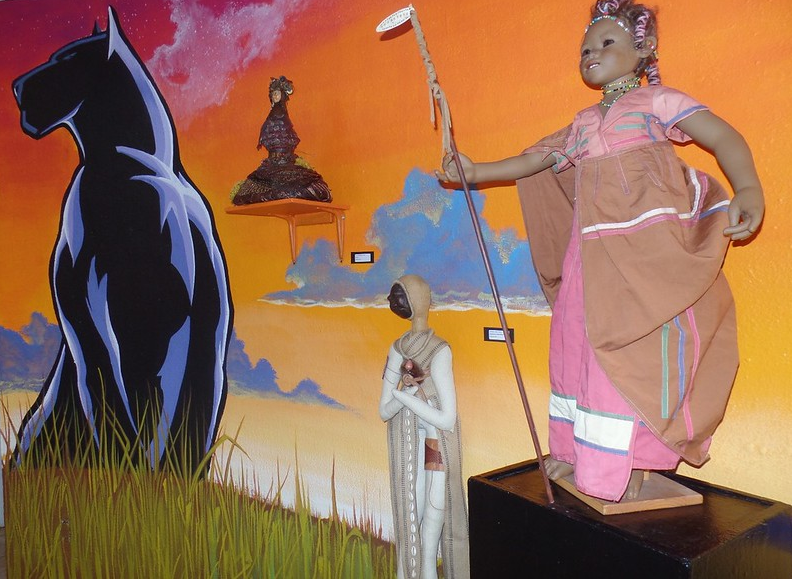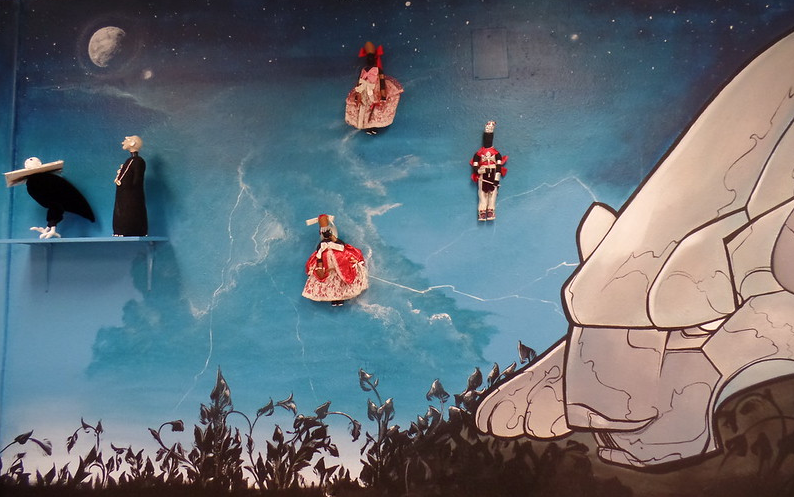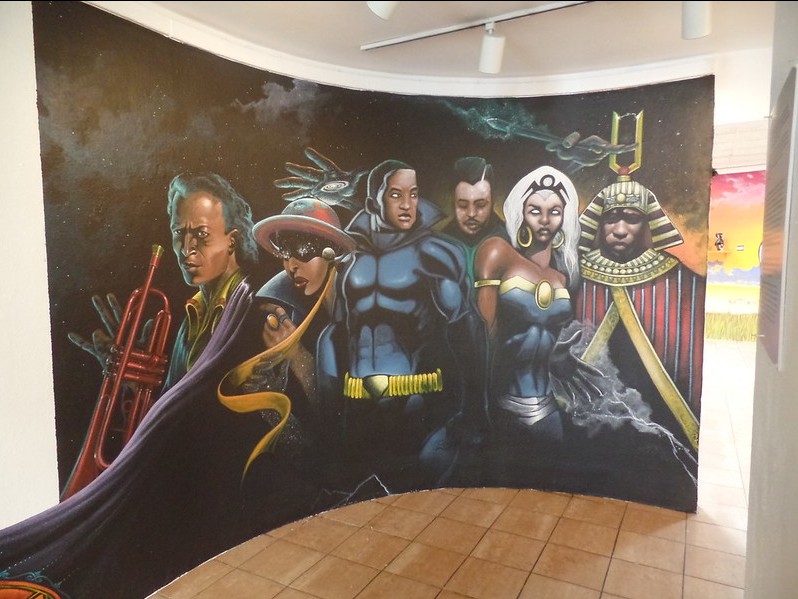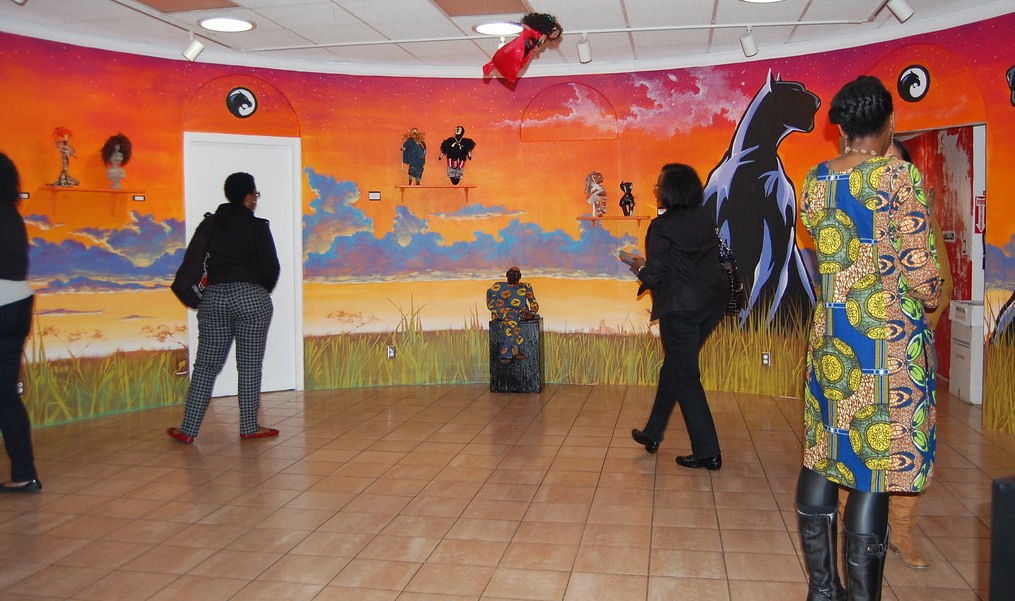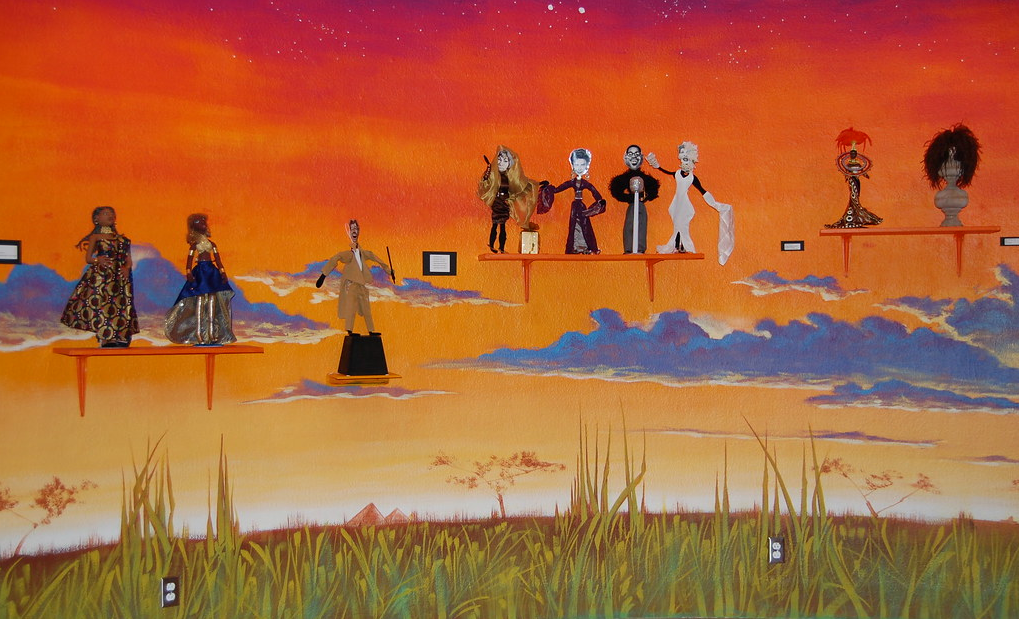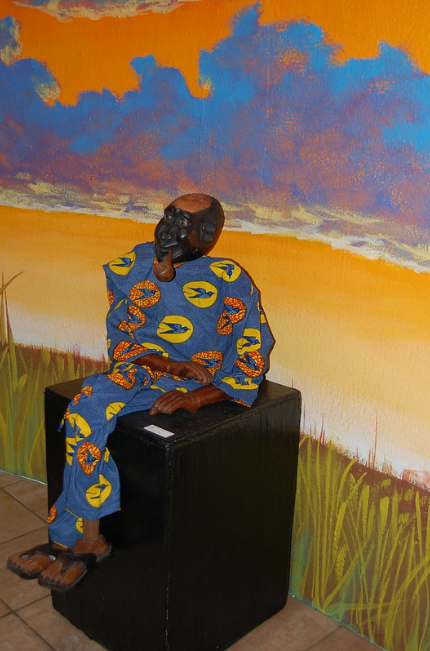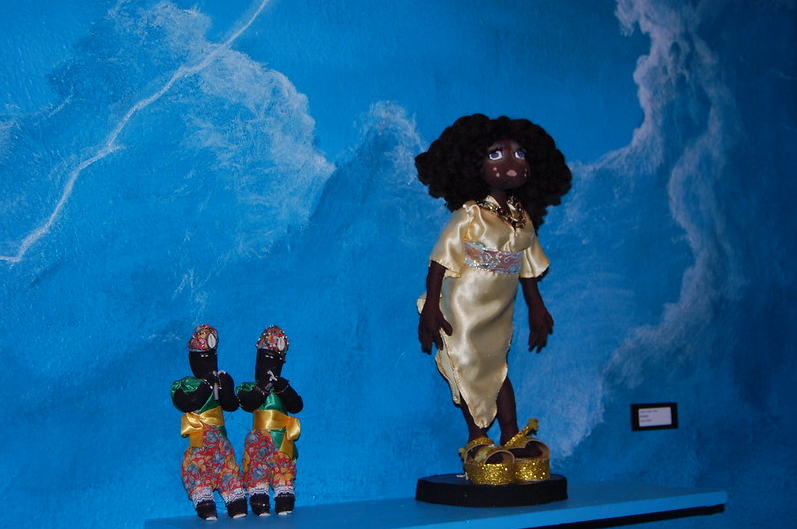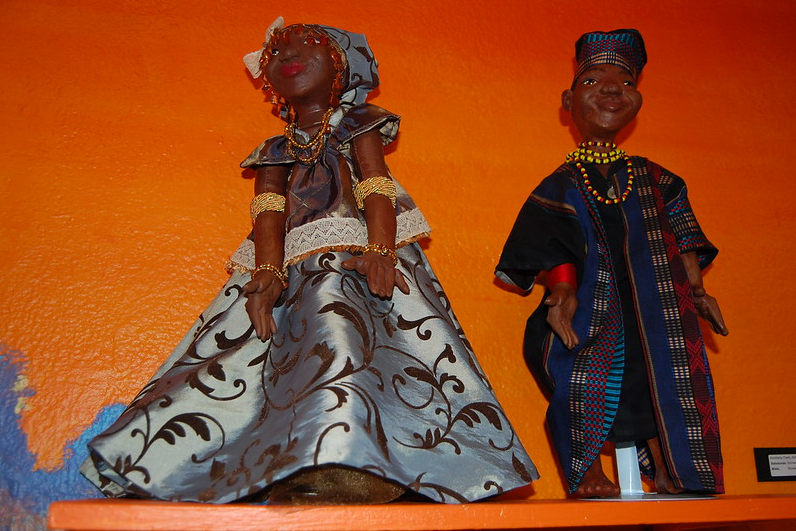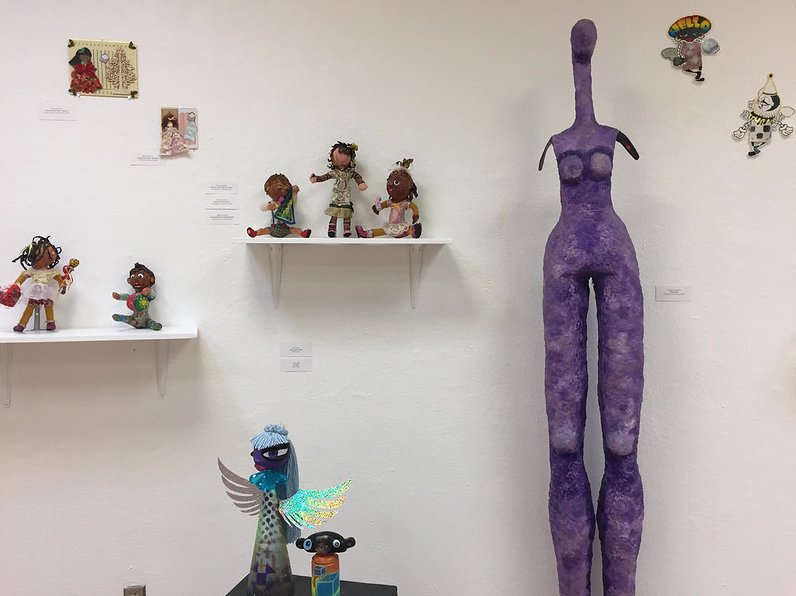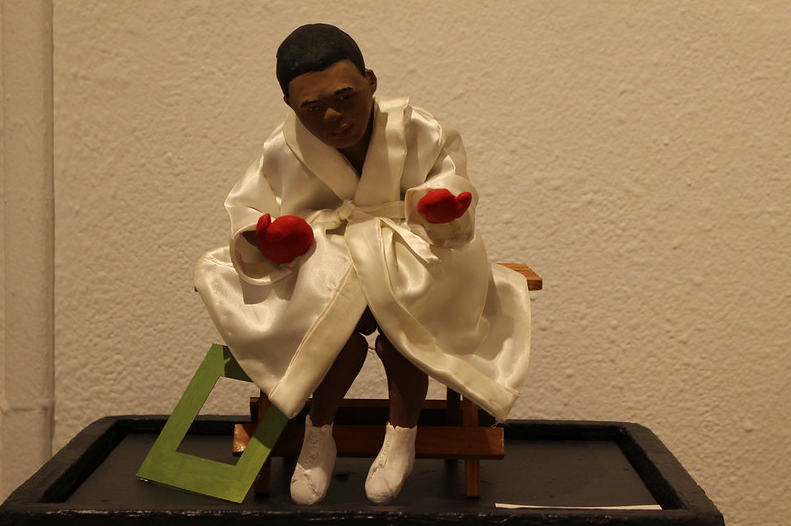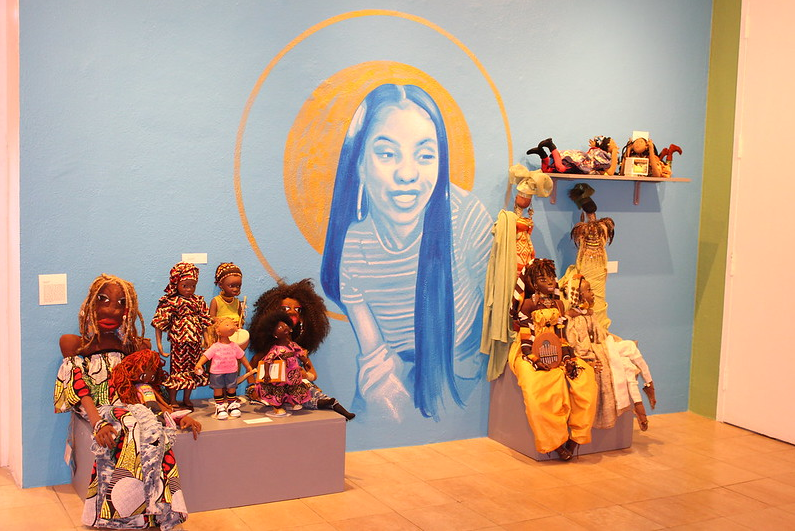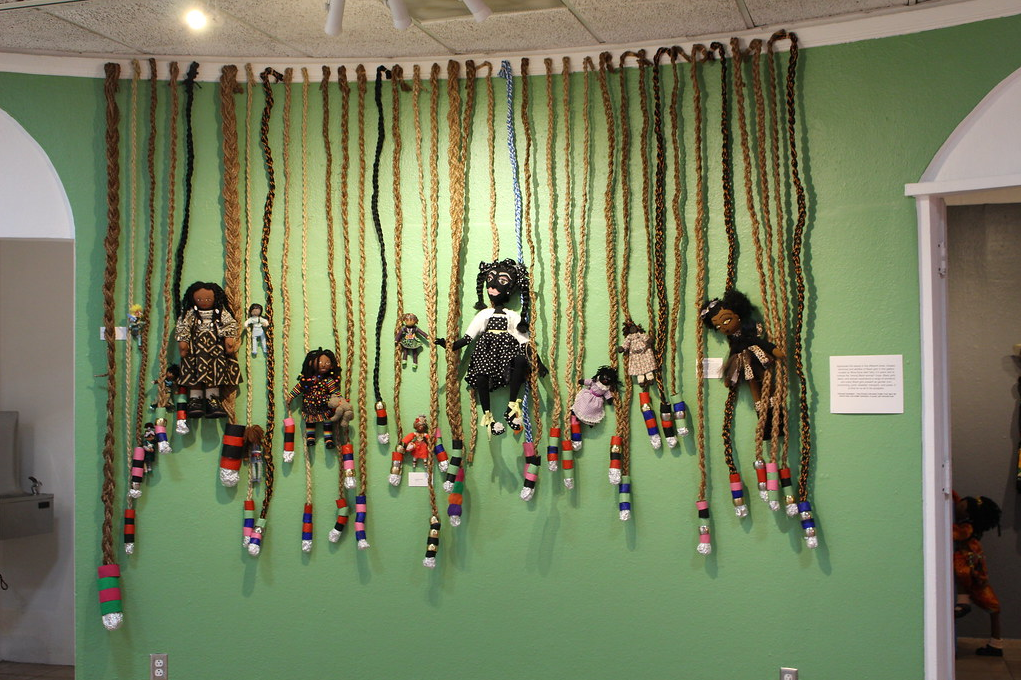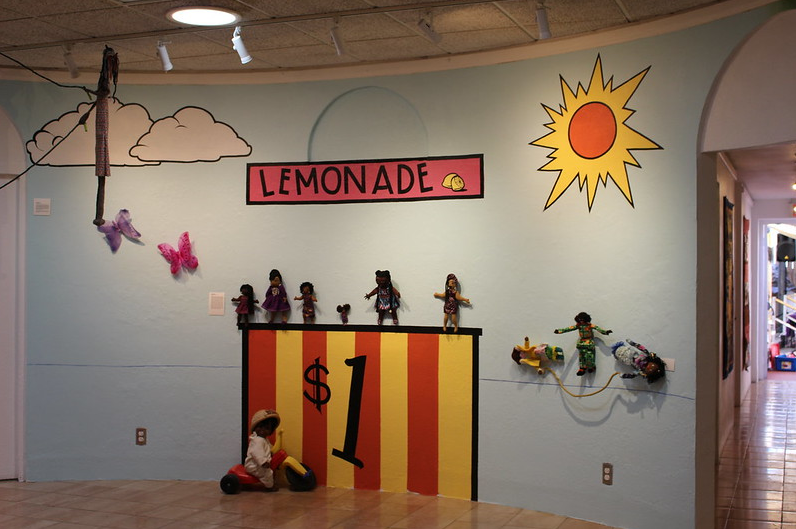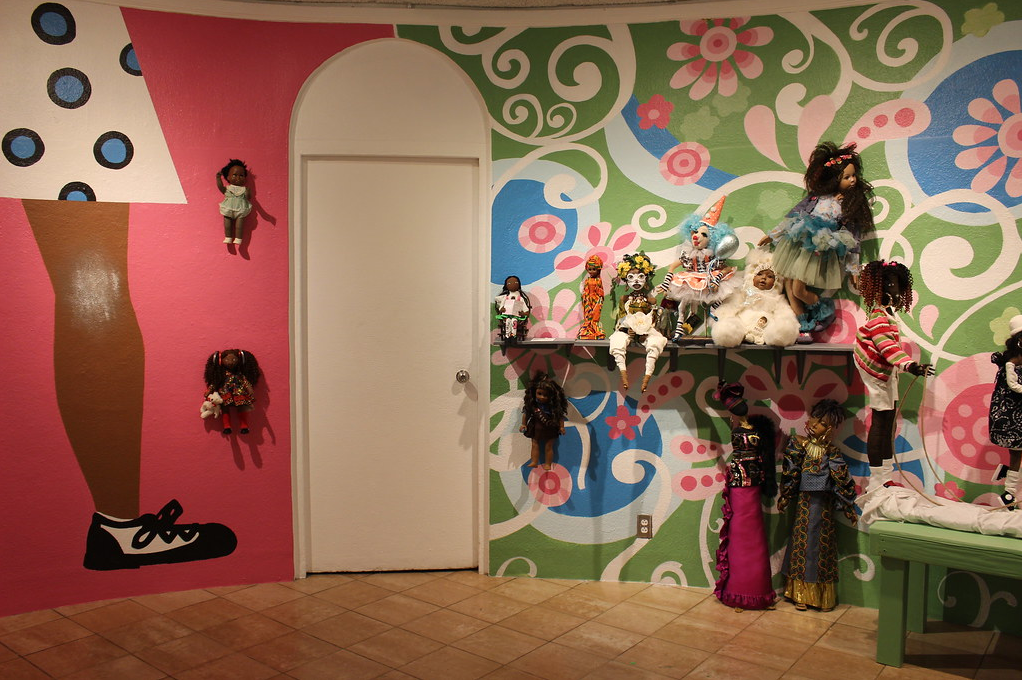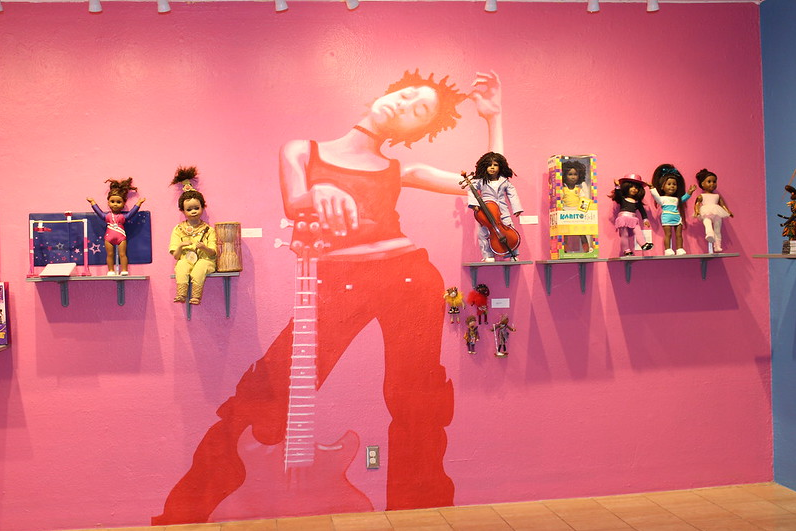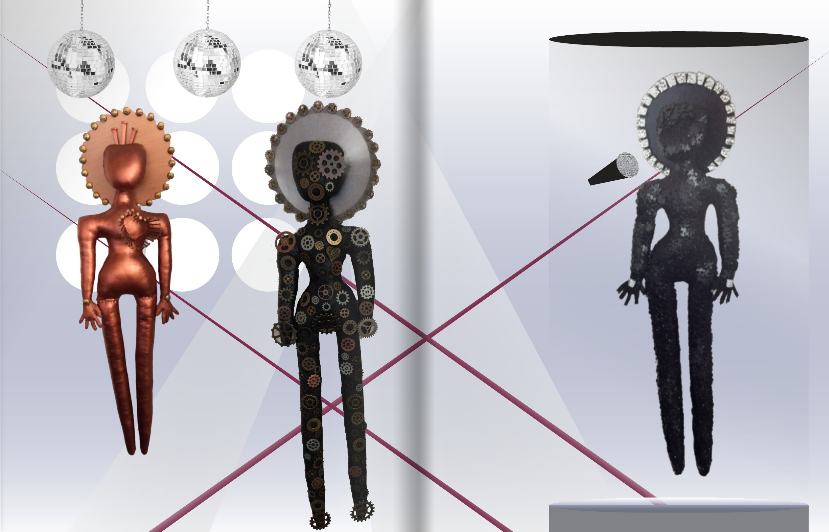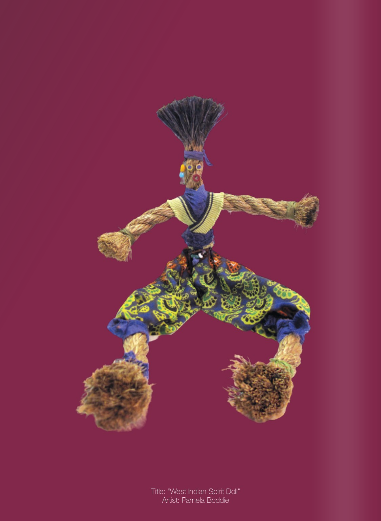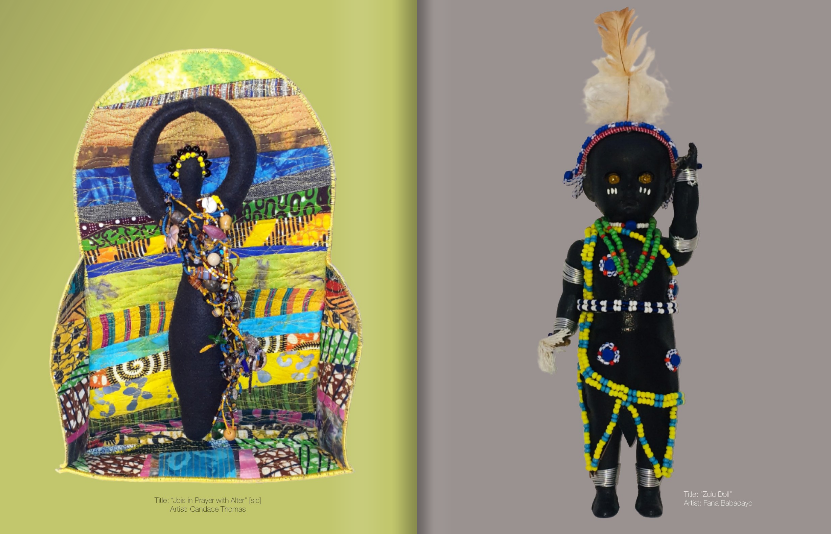Since 1977, the William Grant Still Arts Center has operated a hub for music, art, place-making and creative education. Dr. Still’s vision –as both an acclaimed composer and an engaged community leader – has expanded and evolved over the years. With the support of ambitious and dedicated directors and staff, the DCA, and most of all, the tireless efforts of members of the community, the WGSAC remains as active and essential as ever.
Probably their best-known program is the center’s world-famous Black Doll Show, which has been going strong for four decades. They haven’t missed a year since artist and pioneering curator Cecil Fergerson (1931-2013) curated its first edition (except for the year they celebrated the AKA centennial instead), and despite the dreaded pivot to the virtual world, they made it work this time too. All Dolled Up: A 40 Year Celebration opened in December and was released in stages, with a gorgeously designed e-issue catalog (shoutout to Myshell Tabu, a previous BDS curator who tried to recreate the energy of the site-specific installations in its design), and live online events. The show has been rolled out in three parts: “Getting Dolled Up,” “Going to the Club” and “The Gala” which goes live at 4pm on Saturday, February 6, honoring the history of the show and the artists and collectors that have loved it.
Over the years, the shows have ranged from the all-out fabulous, to the jazz-inspired, materials-driven, mass-produced and mythological, showcasing “traditional dolls, rag dolls, baby dolls, porcelain dolls, manufactured dolls, representations of Black childhood, fantasy and mythology, Afrofuturism and Black liberation.” Maxine Waters had pieces from her collection in an early show. Legendary artist John Outterbridge was in the very first show, and subsequent editions as well, and the roster of featured artists and guest curators includes some of the most respected artists, makers and designers in Los Angeles. The center’s early, foundational directors include Hakim Ali, James Burks, and Kamau Daáood.
Their current Director Amitis Motevalli, herself an artist, tells the Weekly that for the 2020 show, All Dolled Up!, it was important to properly center “how the show has been upheld through all these years by Black women who never got credit for it. We need to thank them.”
Women like Billie J. Green, who started collecting dolls in the ‘90s – especially the Shindana dolls, famous for being not only a Black-owned business (seeded with Operation Bootstrap funds in the wake of the Watts Rebellion) but also for making dolls intentionally reflective of the true, diverse Los Angeles community. Green tells the Weekly that what grew into a lifelong passion and probably the largest Shindana collection around, all started in her own childhood. “Growing up in the South, in Arkansas,” she says, “my dolls were brown, my Santa was Black (that’s how we found out it was my dad!). I never took my kids to the mall Santa, and their toys were always a reflection of them. It was important to me. Shindana were my daughters’ first dolls.” Barbie didn’t look like them – or like any woman for that matter. It didn’t work for her because, as she says, “art and toys are so you can know who you are.”
Sending kids out into the world with positivity, Green says, is something that needs to start at home. “There is trauma when the culture is not built for you.” And gender is a factor too. Apparently the most rare and expensive Shindana now, if you can even find it, is Slade – a secret agent based on Shaft.
Peter Woods, who works with the programming at WGSAC, speaks with reverence of the “weight of this show,” and the true depth of the history it’s been addressing from the start. “Representation matters in instilling self-worth,” he says, “and this show has consistently been an entry point to artistry, especially for BIPOC and women.” Danielle Brazell of the DCA rightly calls the show “legendary,” and affirms its embodiment of “play, ritual, and joy, while affirming identity.”
Adah Glenn, a fine artist and designer who’s lost count of how many of the BDS shows she’s been in at this point, recounts that dolls are at the intersection of everything – industrial design, fashion, jewelry, styling, painting, sculpting, storytelling, and more. “Coming from the hip hop generation, we all did everything – clothing, music, art – it was all presented together,” she says. “My featured BDS room in 2019 had animation. My dolls are not cute, and they are not meant for kids – but kids do love them!”
Glenn worries playtime is getting cut short now, and with kids growing up so fast, maybe it’s no wonder that adults are drawn to her work. “Heartbreaking psychology is absolutely an aspect of this work,” she says. “How people’s minds are a war zone, processing trauma, deep connections, and serious experiences – even beyond what the maker intended. That’s art.”
Teresa Tolliver – another artist who like Outterbridge was in from the very first show – makes transgressive objects with punk and funk roots. At the time, she was creating soft sculpture dolls that were more realistic than her current dolls. She sold one to Stevie Wonder who gave it to his daughter. “The doll was made out of fabric with jointed wrists and was beautiful. After that I moved to mixed media dolls with clay heads, hands, and feet. Since that time, I have made wrapped dolls out of twigs with cloth heads, or found objects for heads. I do not limit my art. I also have made sock dolls, stick dolls, creative recycling dolls, gourd dolls, flower pot dolls, and more. I also made a doll for a museum. It was called Gutsie and it was so big that the children would get inside of it to be born. I made a life-size mermaid doll that was hand-painted that my grandmother put on her couch. She said it did not get her house dirty and it kept her company.”
Montevalli is proud to be honoring these and other artists, like Pat Shivers whose works she describes as “beautiful, complex, significant works touching on the history of figurative sculpture,” along with collectors like Green, and the towering figure of Dr. Cynthia Davis – a curator, advocate, and advancer of a public health-centered practice merging doll-making with philanthropy and AIDS education, in order to promote healing from trauma both personal and generational, in the name of the empowerment of women and girls.
“The true history of this show is the history of its struggle,” says Montevalli. “It was always a challenge for it to even exist, and through lean years it’s been the artists and collectors who’ve collaborated with the WGSAC staff to ensure its survival – even in the midst of budget cuts, federal politics, and the pandemic. One silver lining of at least this latter condition is that going virtual has allowed for much greater national and even international access. “We have new artists and new audiences,” she says, “from the Bronx, to Philly, Detroit, Atlanta, and beyond. The community just keeps growing.”
Follow WGSAC on Instagram and flickr, peruse the flipbook of the 2020 exhibition; get dolled up for the afternoon of February 6, and encourage the kids in your life to express themselves at the February 13 doll-making art workshop with Alek Tabu.
Advertising disclosure: We may receive compensation for some of the links in our stories. Thank you for supporting LA Weekly and our advertisers.


